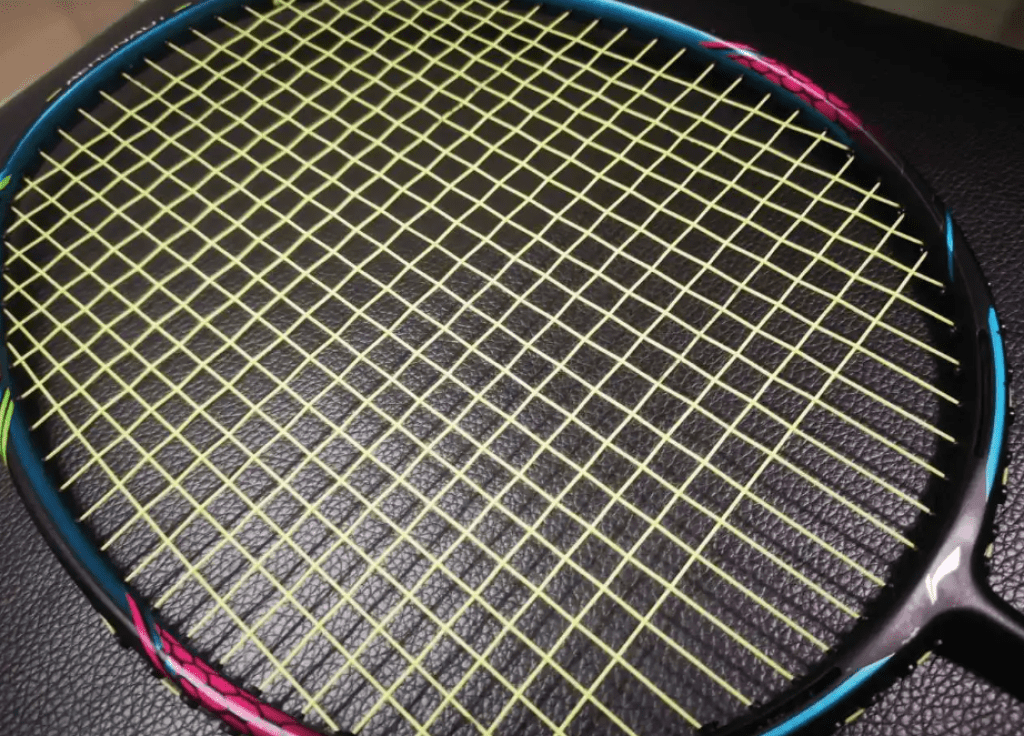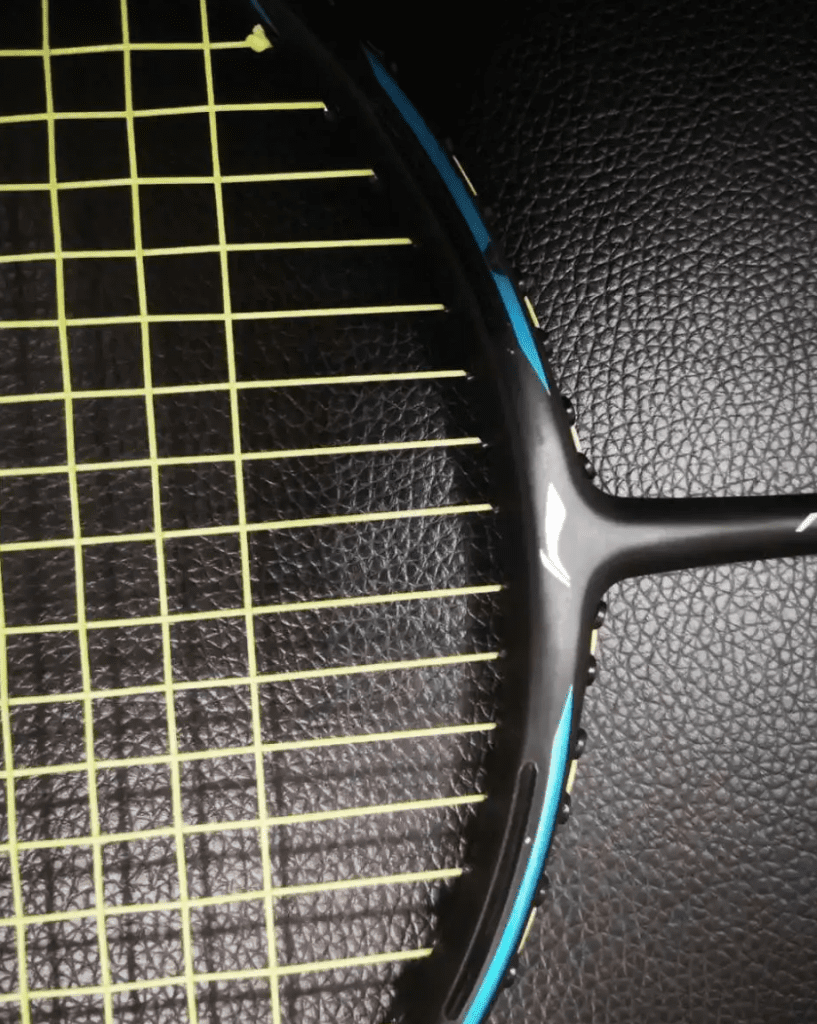Browsing Xianyu at 5 AM: The Third Racket I’ll Receive
In the previous analysis of Li Ning’s three major mid-range and low-end series, the AERONAUT series stood out in terms of popularity. Although the Energy series had a few supporters, it couldn’t compare with the WS series. As for the AERONAUT series, based on the scores from the equipment database, the rackets are indeed good, inheriting the legacy of the old Li Ning AirStream, but they have remained largely unnoticed.
Among them, the AERONAUT 6000 is relatively more recognized, while the AERONAUT 5000 and 4000 have become rather obscure. I wanted to see if these lesser-known rackets have any potential.

Specifications: 3U G5, no grip, total weight in use 92g, balance point 305mm, shaft length 215mm, medium to soft flexibility, box frame, 72-hole stringing, 9-3 point string grooves, tension warranty 30lbs, strung with N68 at 26lbs.
The mid-range racket frame has only one pair of air tunnels, which makes it quite recognizable. The current color scheme is black, purple-red, indigo, and emerald green. I feel like I’ve used a racket with this color combination before, but I initially thought it was the 7000B, which I haven’t actually used. This design looks very familiar, but I can’t place it at the moment. The appearance is indeed youthful and vibrant, but only to a certain extent. Generally, Li Ning’s paint quality is very reliable, but unfortunately, the previous owner of this racket didn’t take good care of it.

Don’t be intimidated by the balance point and specifications; once you hold it, you’ll discover that the AERONAUT 5000 is a “sugar water” racket. It’s head-heavy, has a long shaft, and is relatively soft in stiffness. Although the swing weight is slightly heavier, it feels very satisfying to simply lift the racket and send the shuttle flying. Unlike the holding feel caused by a soft frame, the prolonged shuttle stay on the AERONAUT 5000 is mainly due to the shaft, but the shaft’s elasticity is not disappointing. Moreover, the slightly boxy frame provides a reassuring sense of direction, and after a brief period of adjustment, you can consistently hit the shuttle near the back service line during high clear drills.
Despite the heavier swing weight, it doesn’t feel cumbersome, much like the AERONAUT 9000, which might truly be an advantage brought by the air tunnels.

If you don’t mind the soft shaft, this racket is full of “sugar water” feel. Recently, the reason why I’ve been in poor form is mainly due to constantly switching between entry-level and high-end rackets, where the vast differences in feel lead to long adaptation periods and a lack of enjoyment. However, with the recent use of the Star Shadow and AERONAUT 5000, I’ve realized that I need to “replenish some sugar.”

The head heaviness drives the shuttle downward, and the shaft’s flexibility is easy to harness, with good elasticity and a high degree of compatibility with the head heaviness, without a dragging hitting feel. Although the feedback is not particularly direct, the power of smashes is still decent, reminiscent of the old Li Ning rackets that felt soft but solid. The shots have both weight and speed, and the sweet spot is relatively large, making it easy to control. The disadvantage of the heavier swing weight, which increases physical exertion, is compensated by the lower power requirement.

Of course, in a doubles match, continuous defense against smashes can be challenging. While it’s not a problem to defend one shot, using the racket’s stable shot-making and decent power to lift the shuttle to an appropriate position, as the opponent continues to smash, the shaft and head start to wobble, and the ongoing swing weight makes it increasingly difficult to lift the shuttle, especially when trying to recover from body shots.
In drive exchanges, the typical disadvantages of a soft shaft and head-heavy racket persist. The added swing speed from the air tunnels isn’t quite sufficient, and the holding feel is indeed present. Even though the swing speed feels relatively friendly during proactive shots, it becomes strenuous as the pace increases.

At the time, I treated it as a smaller version of the AERONAUT 9000; this is a mid-range racket suitable for both singles and doubles. I never quite understood the hype around the Blade 500, although it’s indeed a reliable choice with its own distinct drawbacks. After initial trials with other mid-range series, I believe that from the perspectives of ease of use and performance, it’s a similarly good choice. There’s no need to chase after overpriced products just because they’re highly sought after.

Leave a Reply